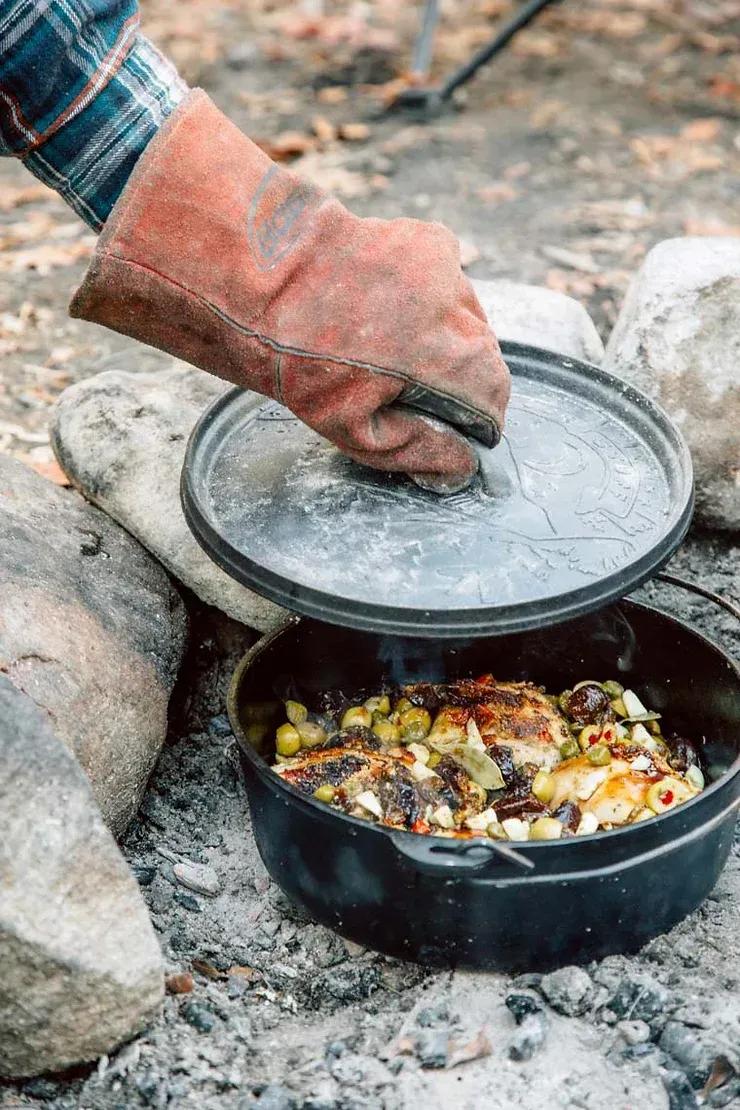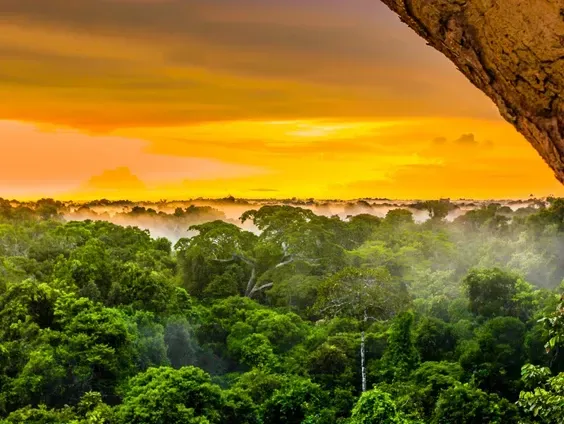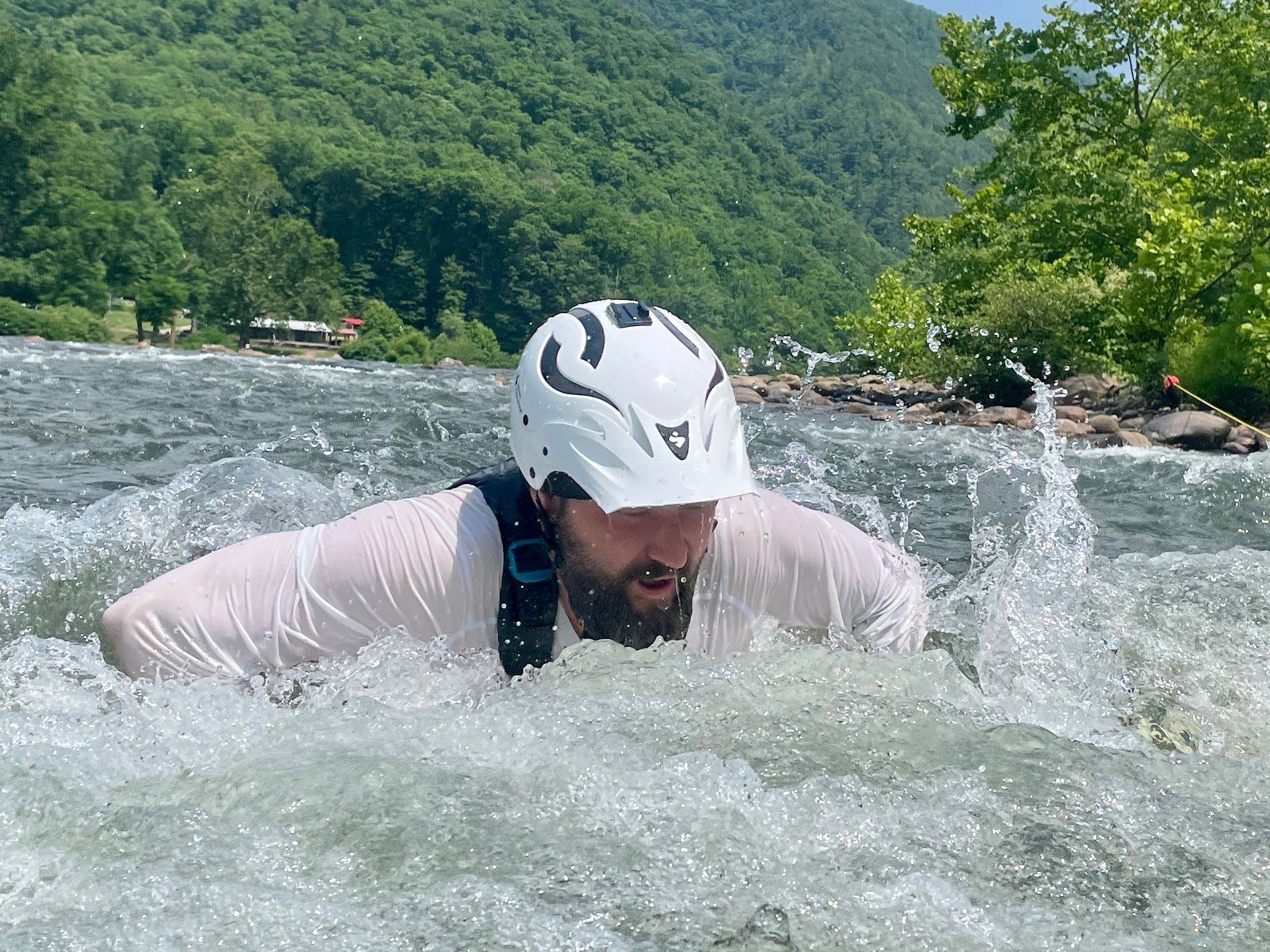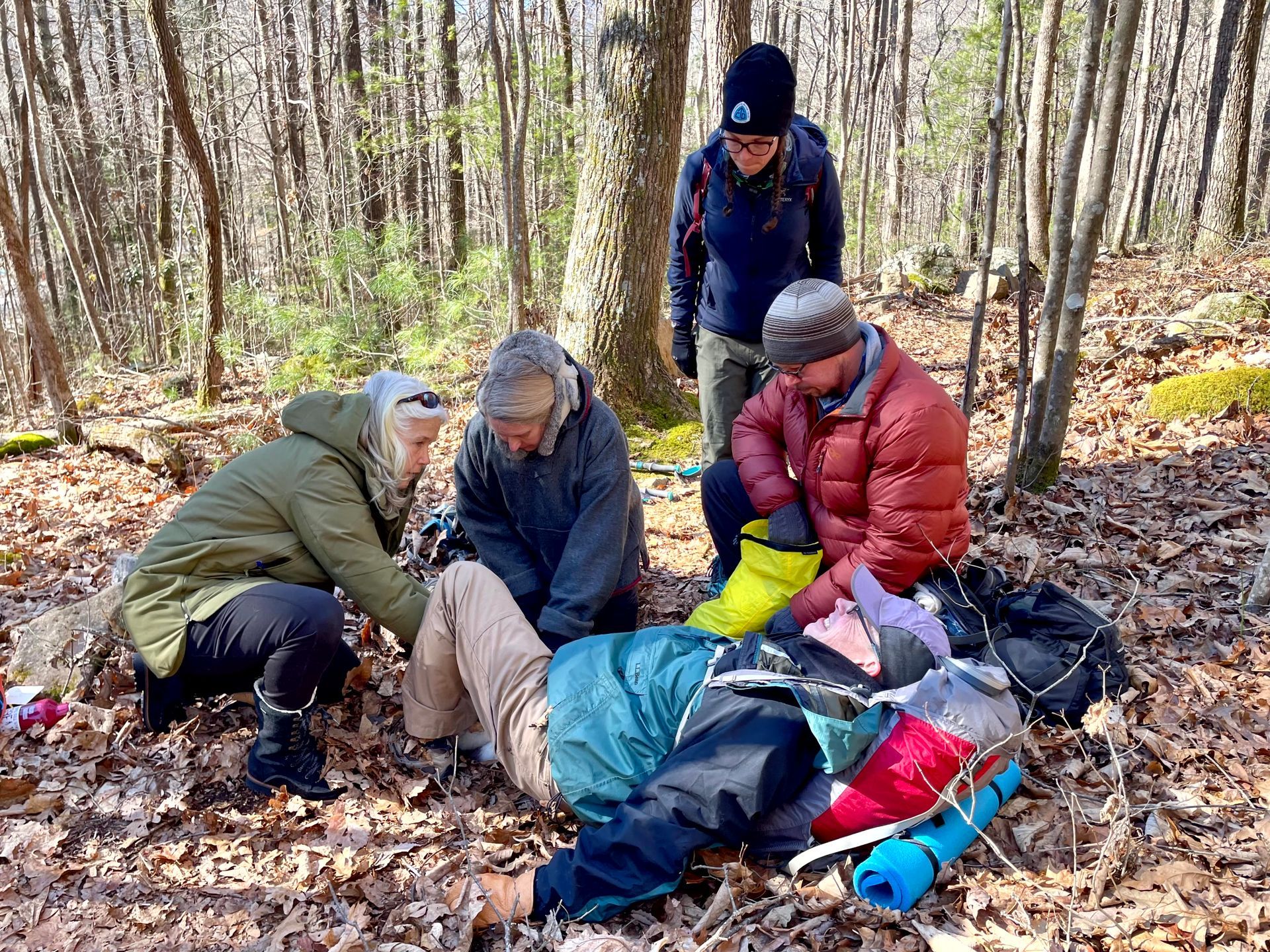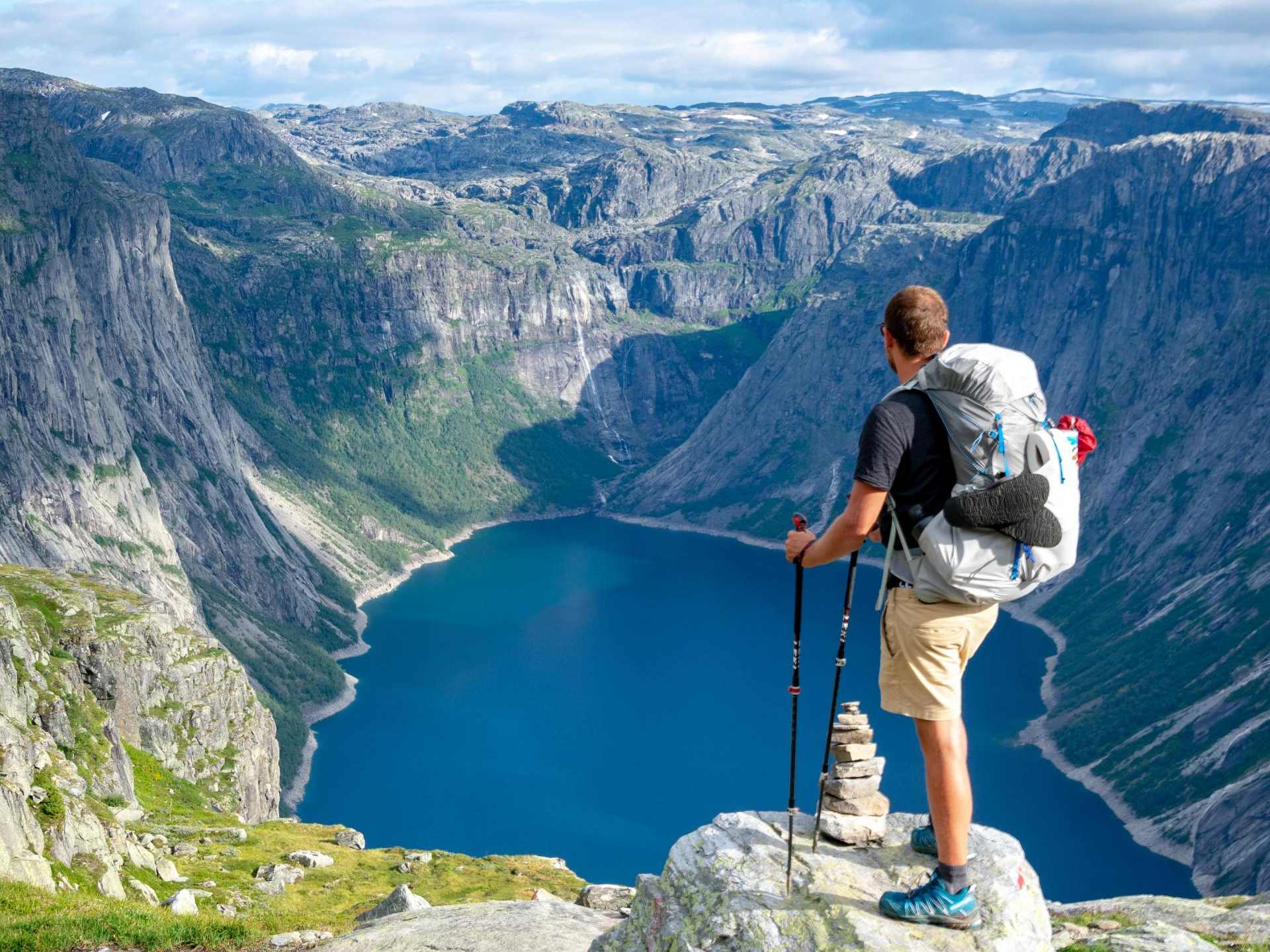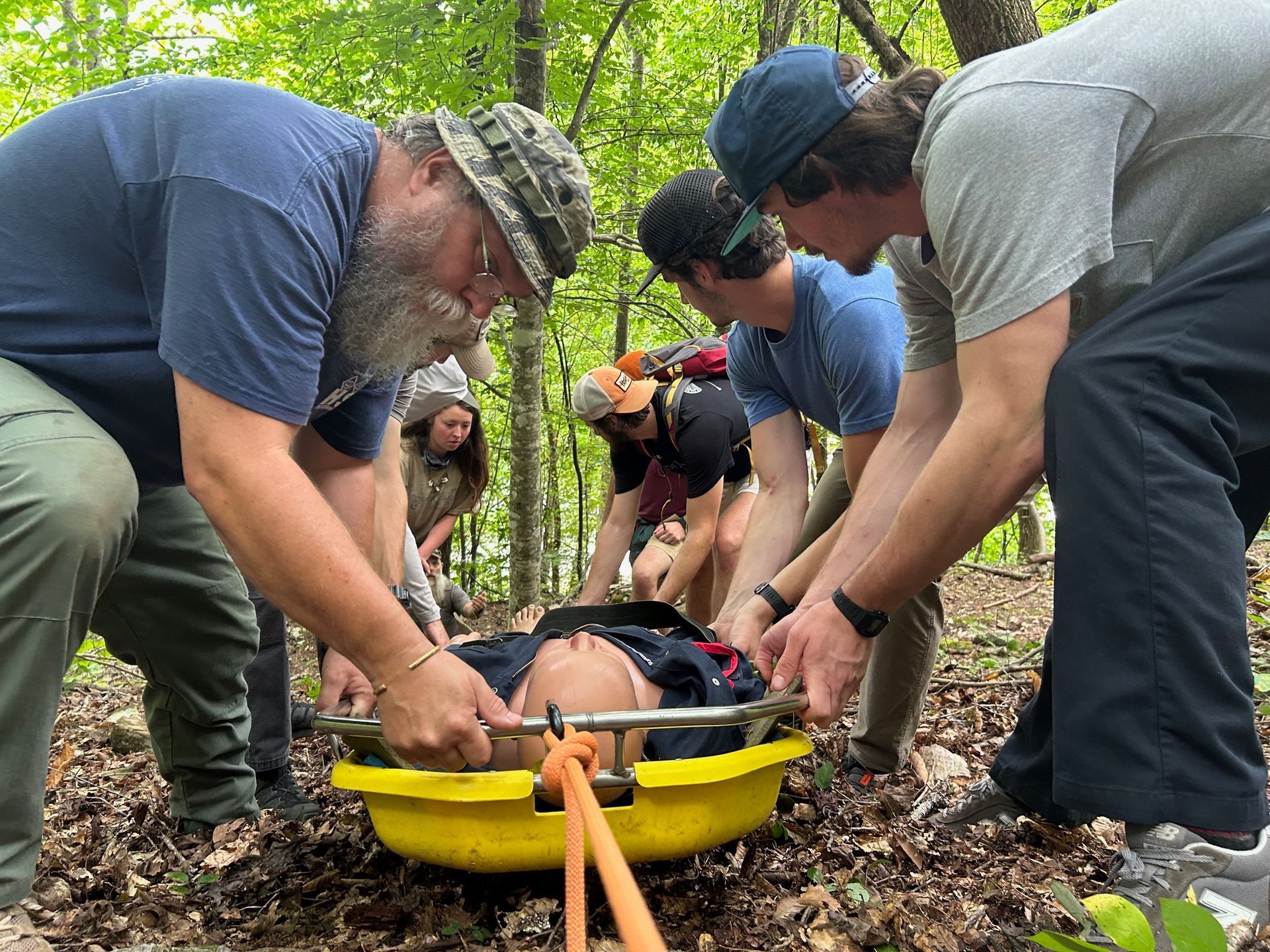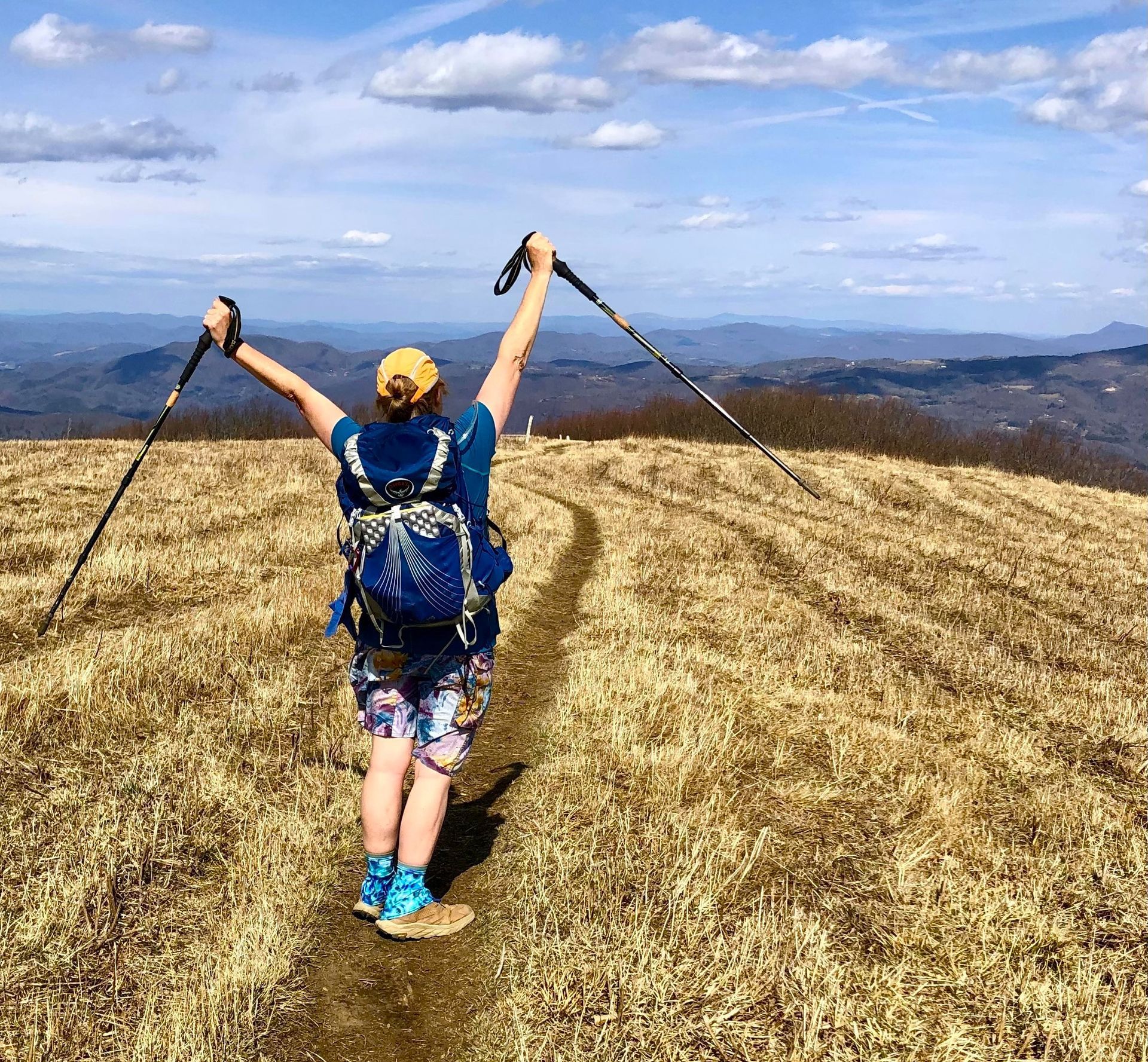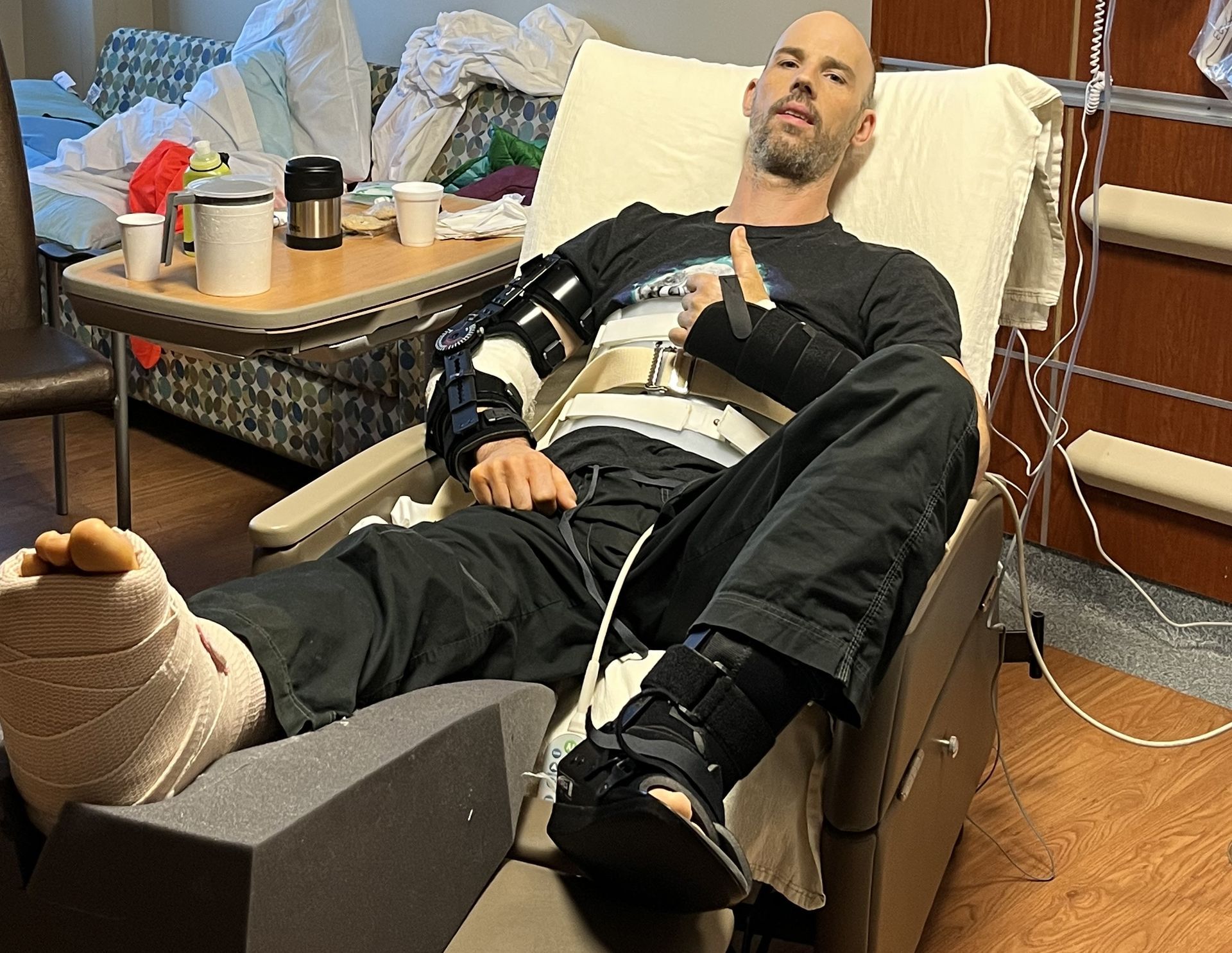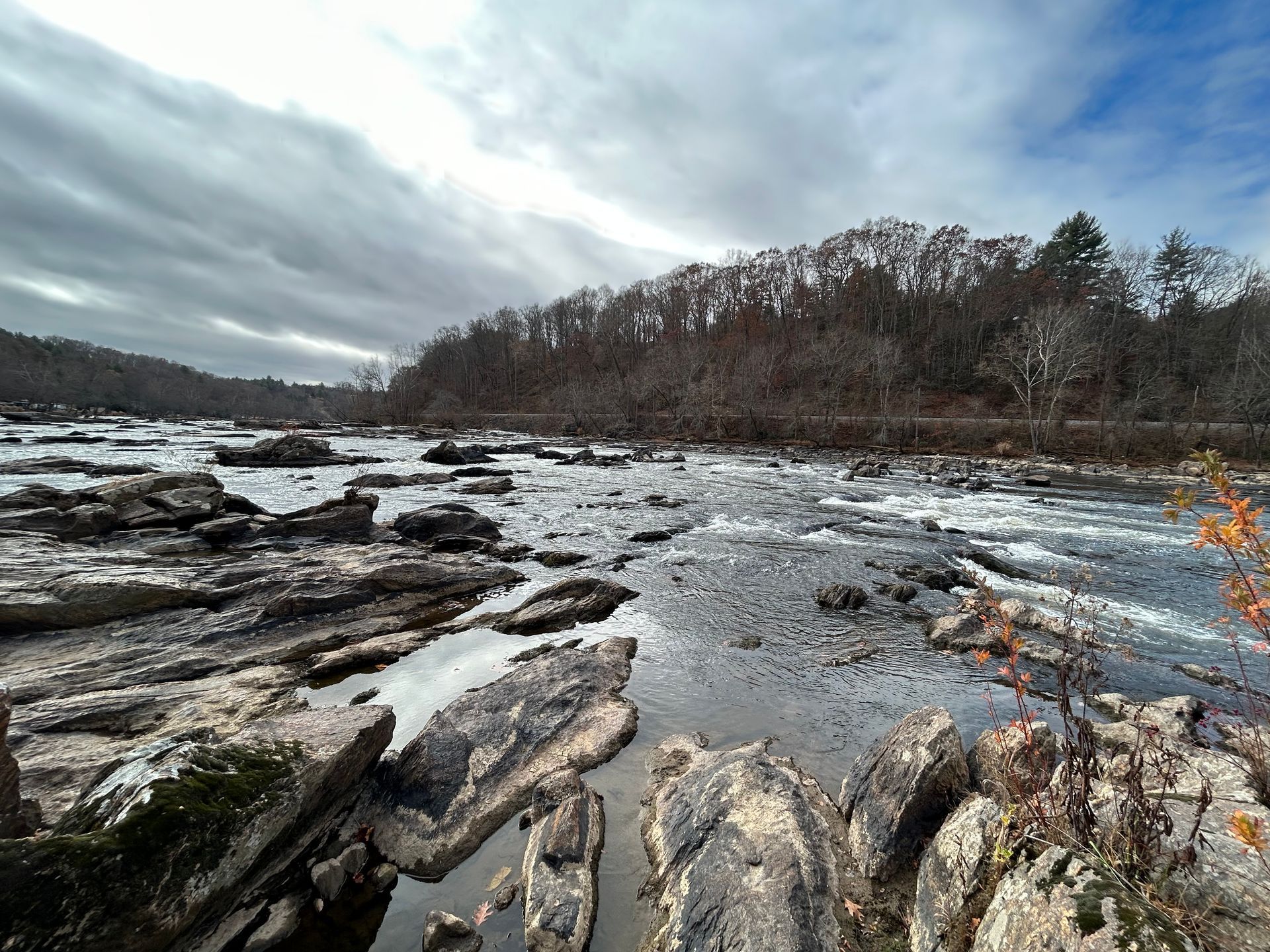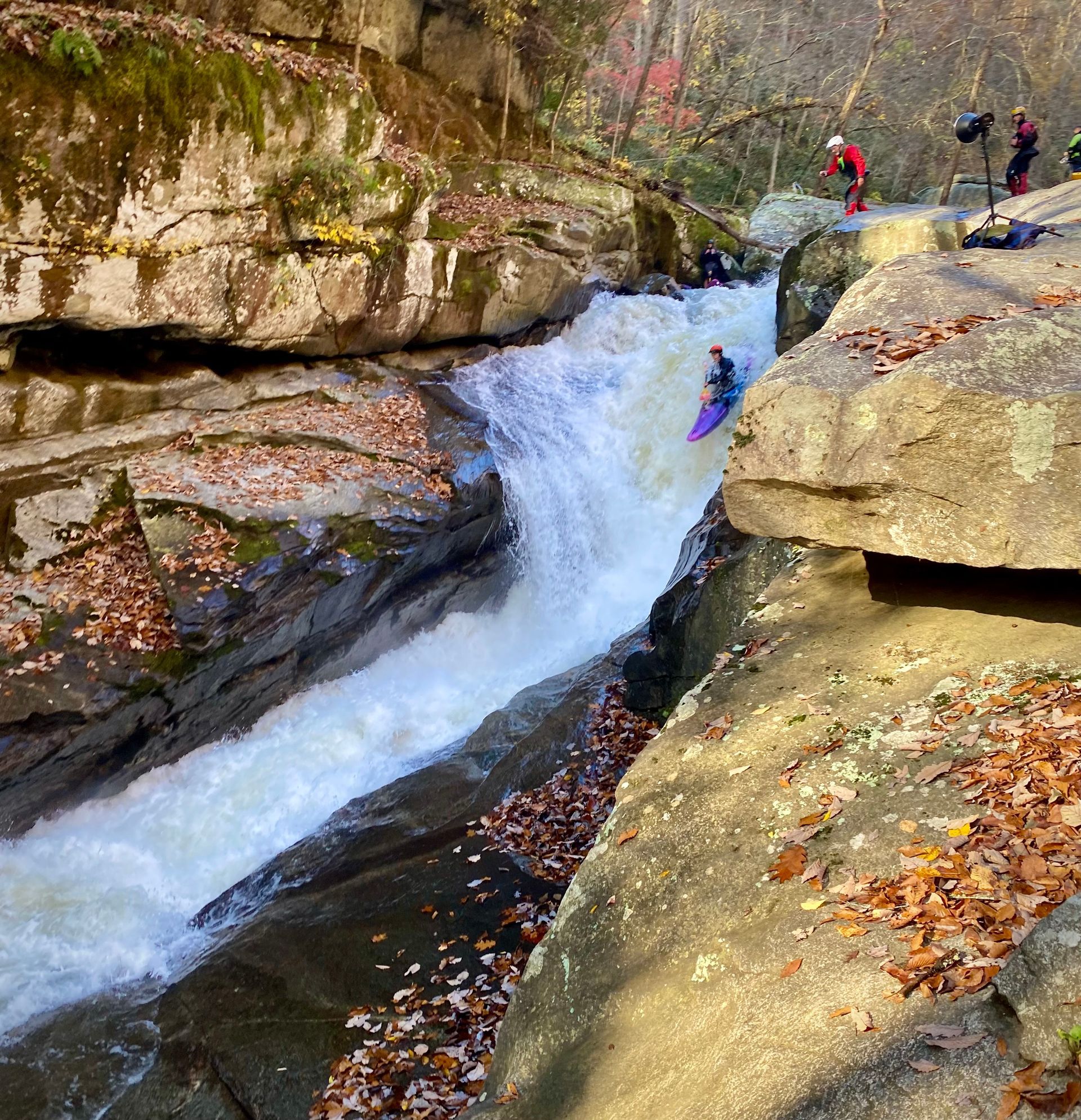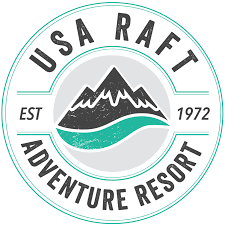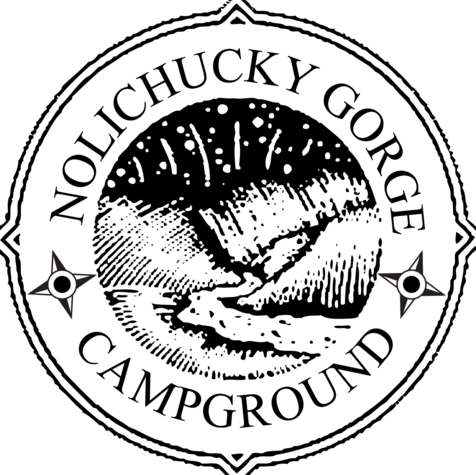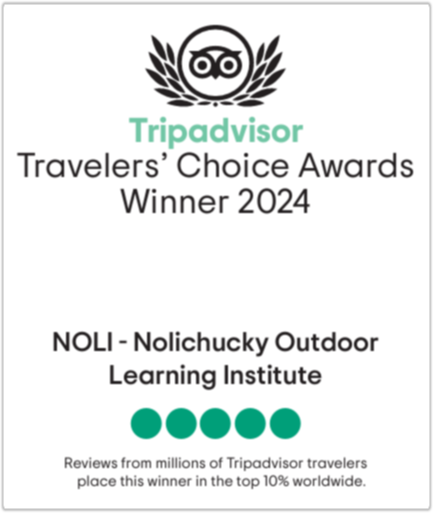Hooked on Kayak Camping
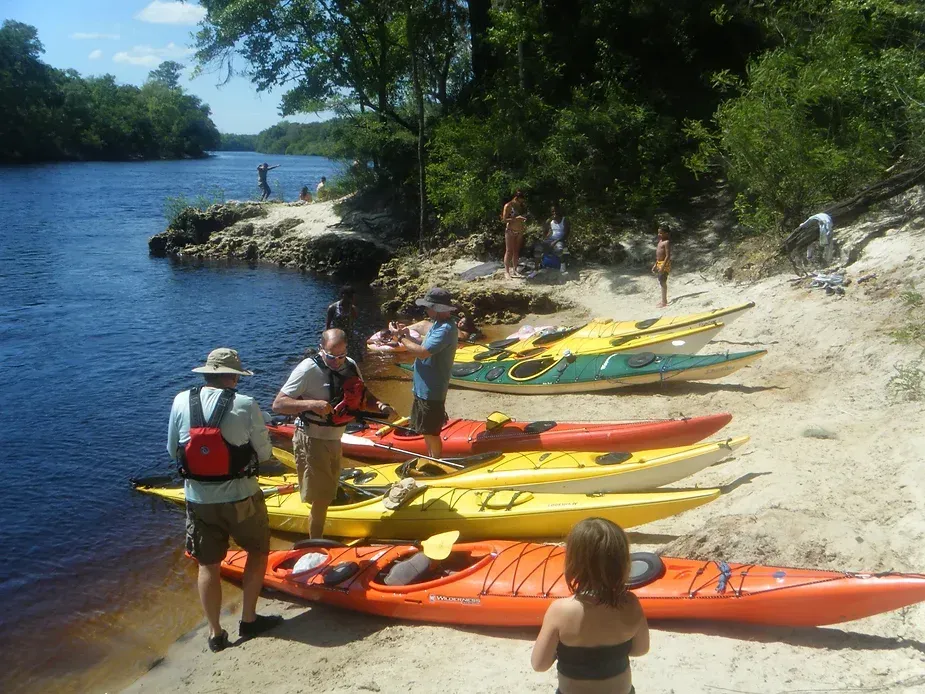
Anyone who knows me knows how much I love kayak camping. I have explored many beautiful waterways in Northeast Tennessee and the wealth of beautiful lakes and rivers in the surrounding Appalachians. I feel very fortunate to live in a region that offers so much.
When I started kayak camping, my friends and I would mostly go locally. I can remember a friend and I paddling all over Watauga Lake for an entire day combing every cove to find the perfect spot to camp. It started off with her and I on these trips, and then several others started going a few weekends a summer and we all got hooked. We would plan group meals to share and sometimes paddle all the way to the marina and back from our campsite just for ice cream. Once we set up camp, we would paddle around in different directions all weekend exploring the lake.
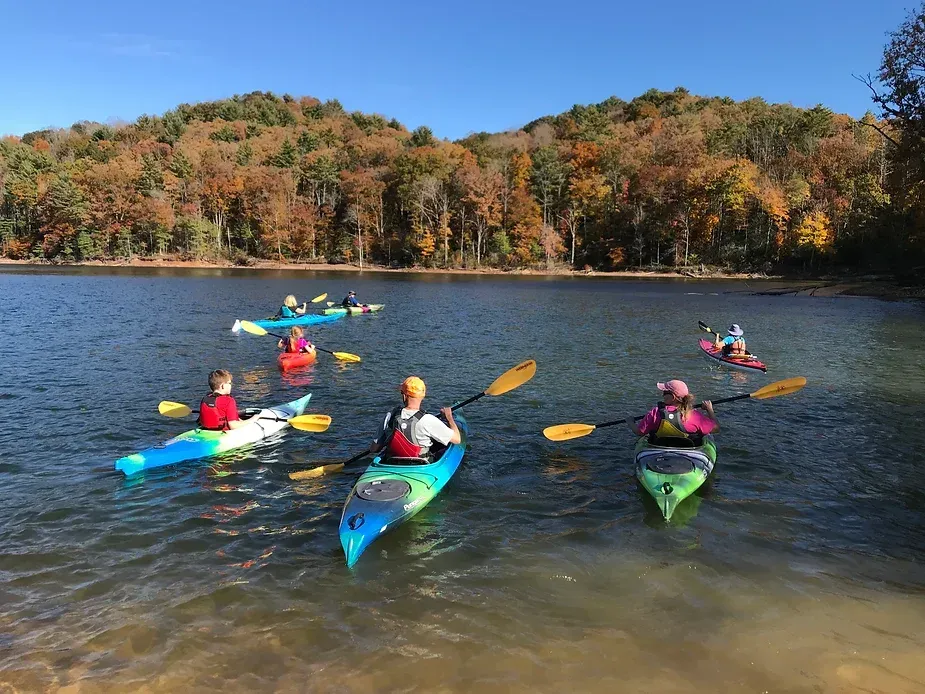
I have always loved a good campfire and in, the evenings, we would often sit in the warm glow of a fire in folding chairs we had packed in our boats recounting stories from the day or telling river stories since most of us had all started out paddling whitewater on the Nolichucky River. I was the one who got the first touring kayak to be in a triathlon and, afterwards, started using it to day trip on Boone Lake near home. After that I went a couple of time with a kayak club in Knoxville, once to Fontana Lake in the Smokies and once to St. George Island off the Florida panhandle. That’s where I got to paddle my first time in the Gulf of Mexico, and it thrilled me!

Soon I was switching back and forth between paddling my whitewater kayak on class II-III rivers to longer and sleeker fiberglass touring and sea kayaks on larger bodies of water. The longer kayaks enabled me to skim along on the water faster than a shorter kayak and they lent more room to pack everything in them, and I found myself continuing to explore. That summer I spent the 4th of July on an island on South Holston Lake and did a 3-day trip on the New River in North Carolina. As our skills improved, we learned how to pack food that would not spoil and got smaller compact gear that would go in dry bags, enabling us to go on more challenging trips. Over a Thanksgiving weekend five of us launched on Lake Berkley in middle Tennessee and paddled all the way around the horn and through the cut-through made for container ships to enter Kentucky Lake. In strong headwinds and rolling waves, but mild temps, we navigated 50 miles in 3 days. That area is called the Land Between the Lakes and the lakes are so wide you cannot see to the other side and they are deep enough for the ships. We were all self-contained with all or own food and shelters and we all did it in long 17’ sea kayaks.
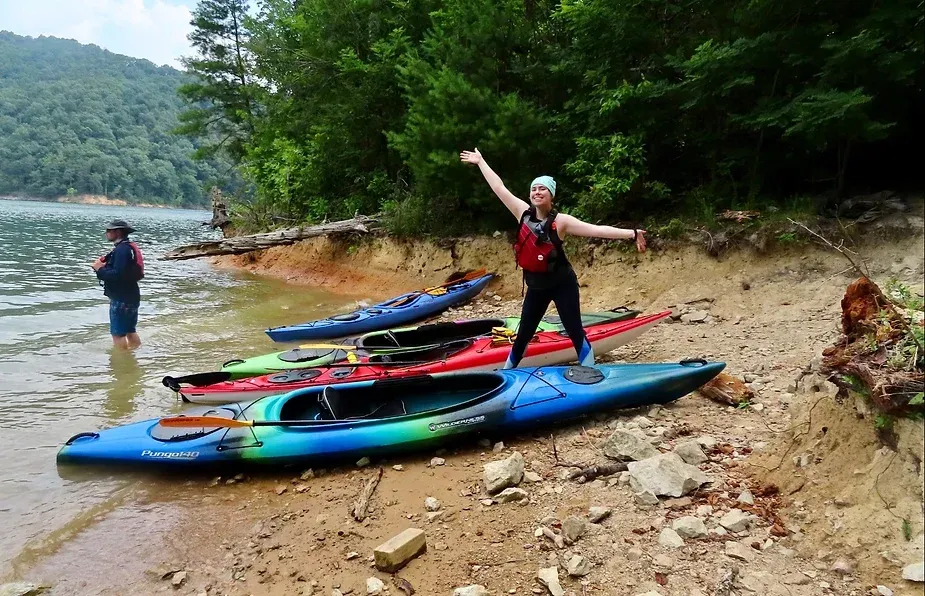
And then one January, when it was too cold to paddle here, I attended a camp-out in central Florida in the Ocala National Forest. I took my kayak because they told us that we would get to paddle on two different rivers with a guide. “Nice!” I thought to myself. Our guide, Andy, was the co-owner of a kayak school that offered classes and weekend trips, so he was not only a very experienced kayaker he also knew all about Florida. He also made his own cedar strip kayaks that are literally works of art. With a guide like that, I decided to go the following year and the year after that!
He eventually invited several of us to kayak camp with him and another friend for a 3-day kayak camping trip down a section of the Suwannee River in Northern Florida. I, of course, jumped all over it because I already had all the gear and it sounded like a trip of a lifetime. I had already seen that the rivers were beautiful in Florida, not the swampy, mosquito and alligator ridden rivers my imagination had previously envisioned! The springs are crystal clear and stay a constant 68-72 degrees year around, so I was going to get to snorkel and swim because in the springtime its sunny and warm down there.
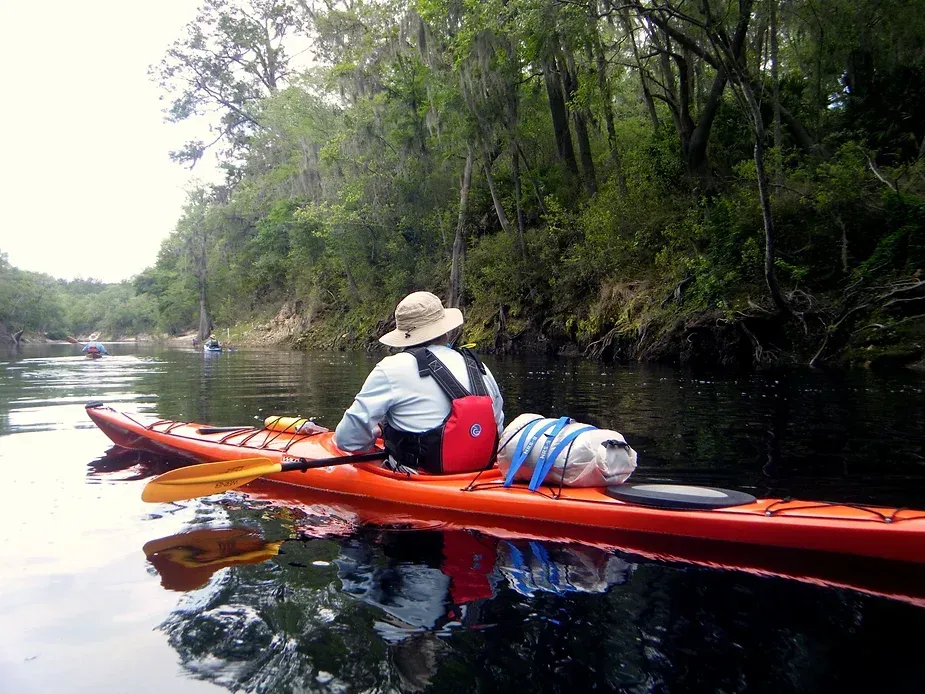
Six of us went and Andy hired a caterer, Ben, to do our food. It was awesome! I did not even have to take my coffee pot because Ben had it ready first thing in the morning along with a hot breakfast. Besides a packed lunch and an exquisite dinner each night, he would have cold drinks ready for us in a cooler for when we got off the river each day. One of my favorite things was to nap in my hammock while he cooked dinner. I had never gotten to do that before, and his food was certainly better than anything instant that I would have taken.
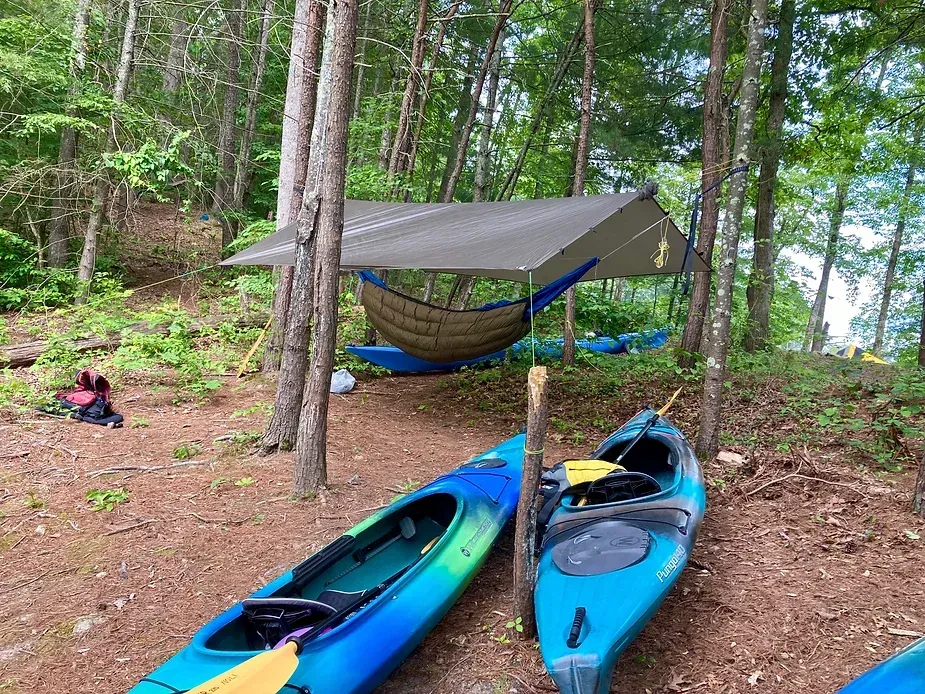
The relaxing opportunities in camp and on the water made it a true vacation as we paddled down a gorgeous gently flowing river all day taking our time and stopping to enjoy and photograph the giant live oaks, cypress trees and beautiful birds, as well as go swimming in the springs and enjoy the sandy white beaches along the river. The Suwannee River is a tannic river but it's not black or stinky or anything like that. It's the color of tea and fed by freshwater springs that look like glistening coves as you wind down the river and can paddle right up into most of them. They are so clear you can see the fish, and some have little parks for swimmers. One even has a high dive and a rope swing. We also stopped and had lunch and ice cream at a campground that has a short order grill and a camp store.
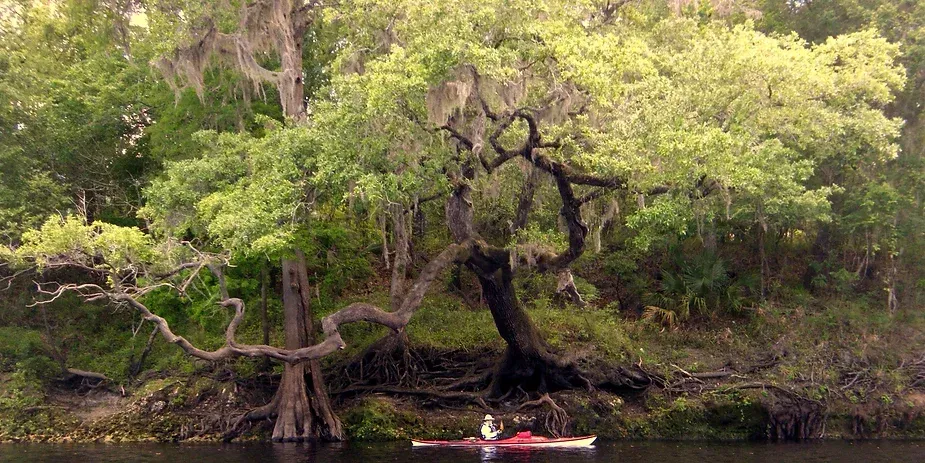
Once we reached our camp each afternoon, we unloaded our boats and piled everything in these nice carts and wheeled our gear up to screened in platforms that have a covered roof and a screen door. Some laid out sleeping pads or hung a hammock from hooks on the beams. So, there was no need for a tent unless we preferred to sleep outside. We also did not have to rough it because all the river camps had hot showers and clean bathrooms and a large pavilion with picnic tables where the meals were prepared and served.
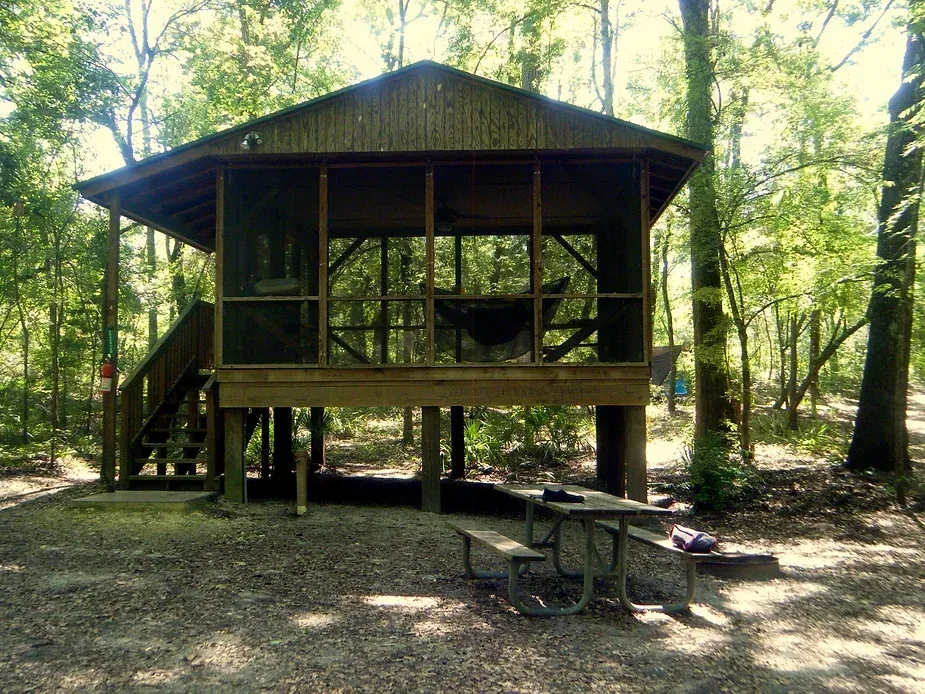
Setting down to a nice meal each night and enjoying a fire afterwards was awesome, but there were also unexpected treats. There is a species of firefly in the springtime that is different than what we have here in Northeast Tennessee. Instead of slowly rising into the tops of the trees, they stay at eye level all night! I was fascinated and watched them until I fell to sleep.
I continue to do many other kayak camping trips, but the Suwannee River trip remains my all-time favorite because of the beauty of the river, the relaxing pace and the diversity of the flora and fauna. So, I have decided to start offering it as 3-day 2-night package deal through the Nolichucky Outdoor Learning Institute (NOLI) just like the ones I fell in love with. The package includes:
- A stable 14’ kayak with dry hatches, a paddle and life jacket
- Andy and NOLI Instructors as your river guides for 3 full days on the river
- 2 nights camping in nice river camps with full amenities, screened in platforms with power and ceiling fans that sleep 2-3 people each
- All meals including breakfast lunch and dinner each day cooked fresh in camp by our favorite caterer Ben!
- Transportation from the takeout to the put-in so that your car will be at the end when we take off the river on the last day!
- We also provide a How-To Video and Packing List in advance to help you prepare
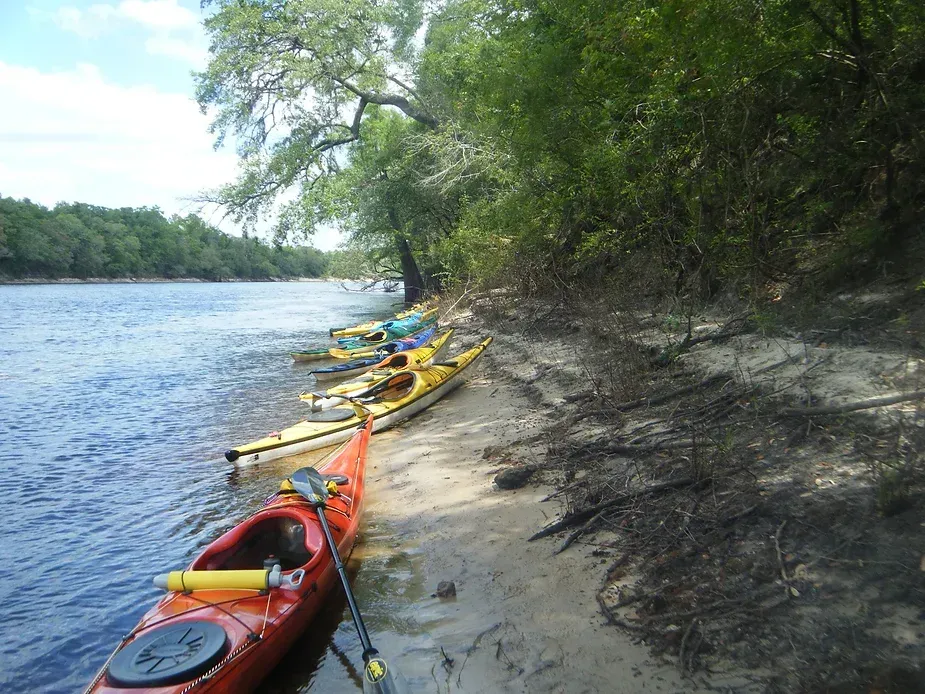
We hope you will join us Oct 10-12 for this wonderfully unique trip “Way Down Upon the Suwannee River” and create lasting memories. Or, if you would prefer to keep your adventures closer to home here in the Appalachian Highlands Region of Northeast Tennessee, we have our Kayak Overnight Adventure trips this summer on the beautiful emerald-green waters of Watauga Lake, including Jul 12-13 and Aug 30-31, where we paddle right up to our campsites at a Forest Service managed campground with full amenities. Kayaks and camping gear provided. Questions? Please feel free to contact us at 423-641-0100.
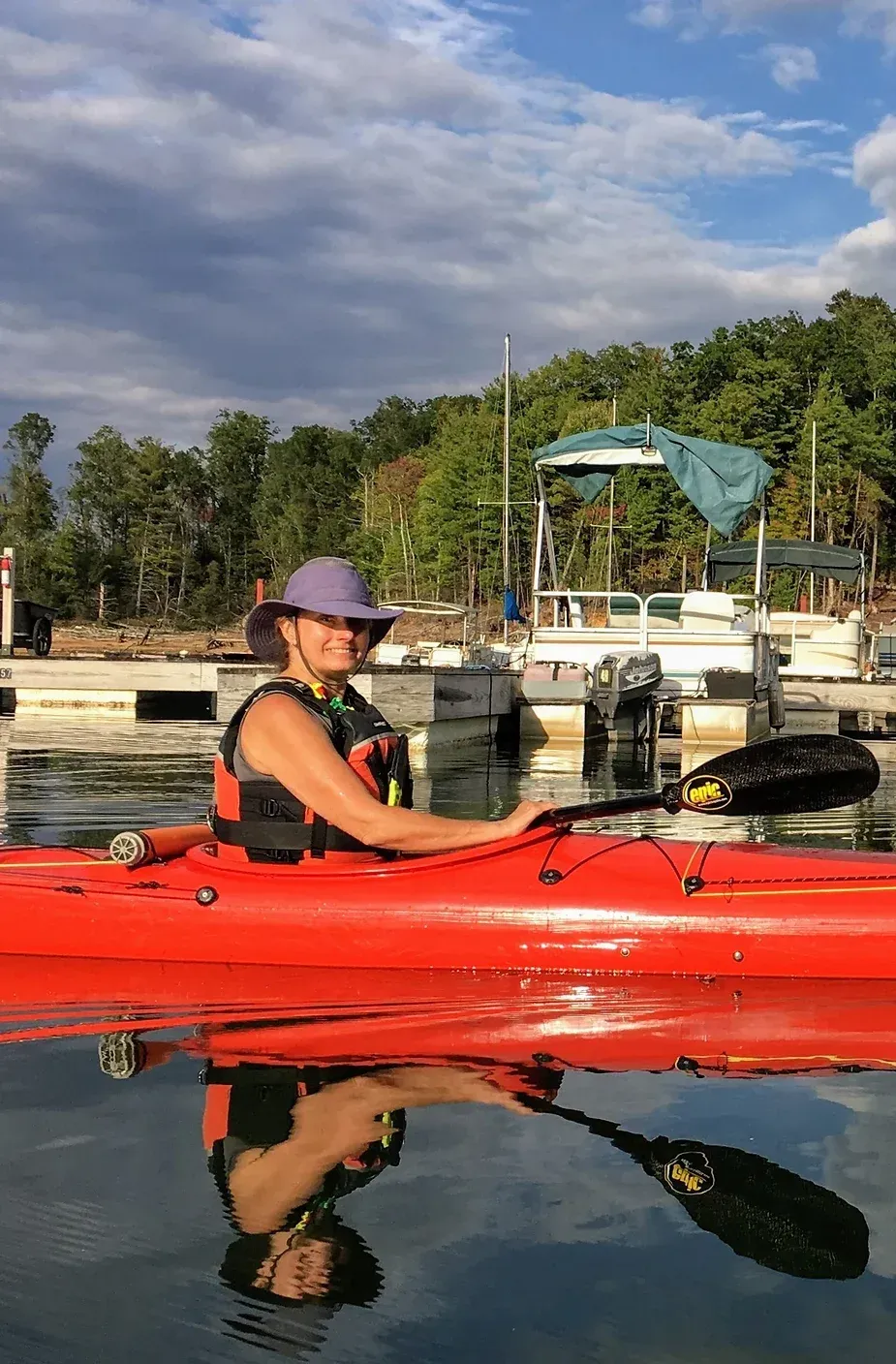
Deb Briscoe is lifetime outdoor enthusiast and an instructor with the Nolichucky Outdoor Learning Institute (NOLI). She teaches flatwater kayaking, water safety and rescue, and camping-related classes.

